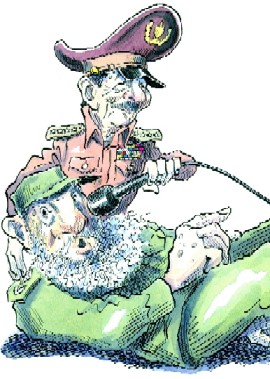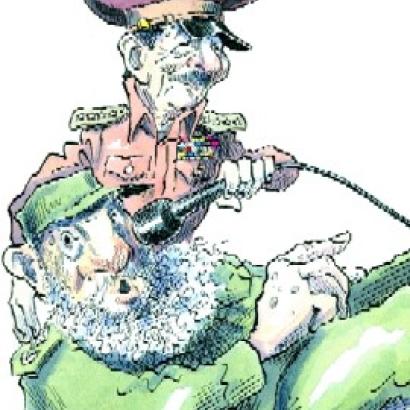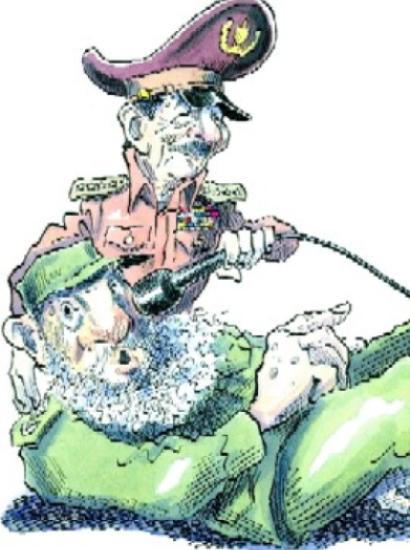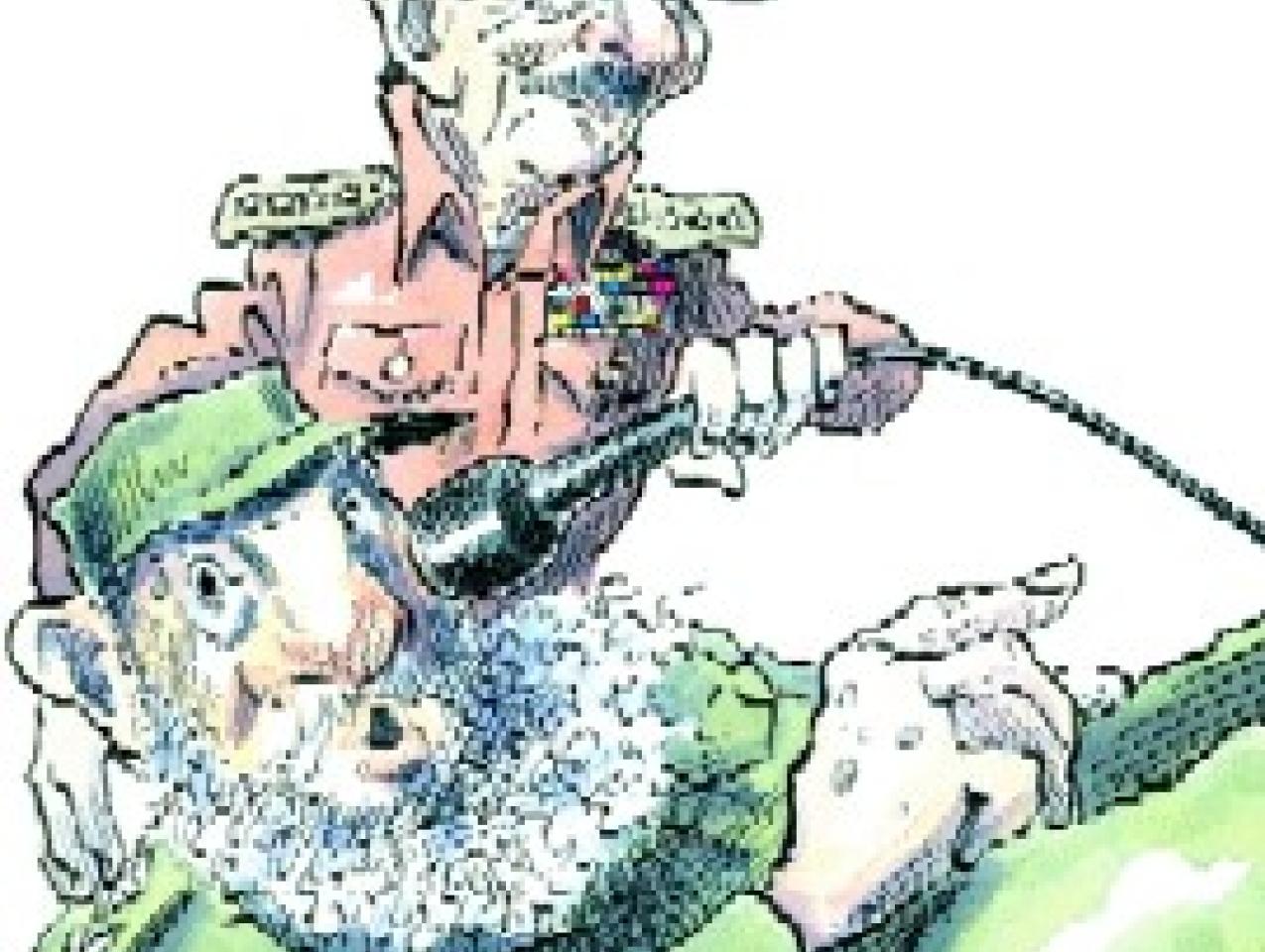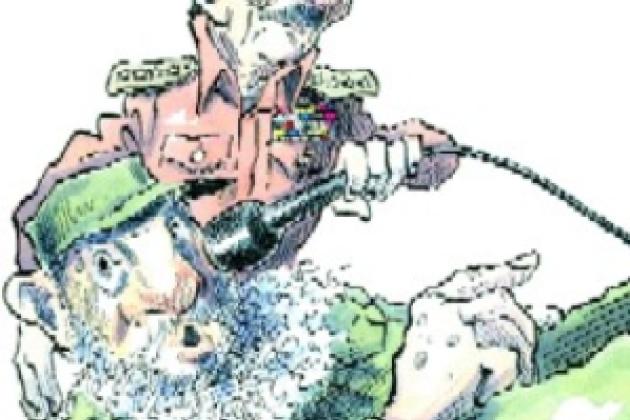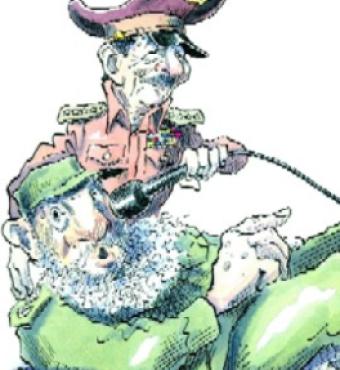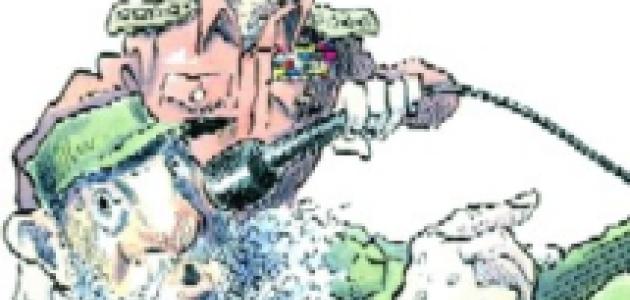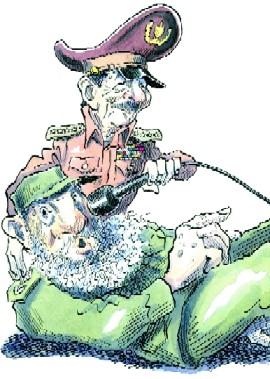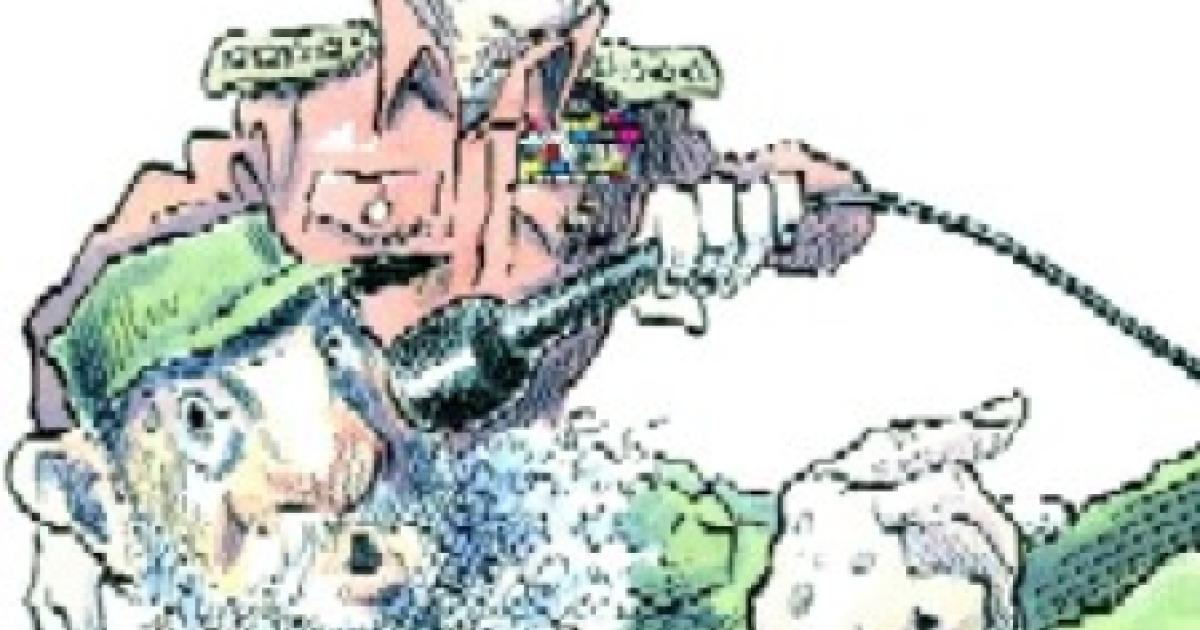Fidel Castro is dying.
So are we all, of course. But his recent histrionic efforts to deny this reality are backfiring, reminding everyone that even Fidel cannot cheat death forever. And his would-be legacy, the Cuban Revolution, can also be expected to backfire.
By freezing Cuba in a time warp since 1959, what Fidel has actually done is preserve a virgin motherlode for American investors to mine after he leaves. Once Cuba opens up, a torrent of Yankee investment dollars can be expected to pour in, transforming Cuba into the most prosperous, capitalist, and Americanized country in Latin America. In an irony to end all ironies, Fidel’s true legacy may well be a Cuba Capitalista, not a Cuba Revolucionaria.
But to ensure that Cuba does indeed become democratic and capitalist after Fidel, we need to begin laying the groundwork now. Fidel, sensing his own end, has already anointed his half-brother Raúl to succeed him—and Raúl has the support of old-guard military, secret police, and dogmatist cabals bent on preserving their fiefdoms. With the help of a handful of former American diplomats and military officers, they are already working on ways to retain power after Fidel is gone. And, if they succeed, freedom and democracy will lose.
That is exactly what happened 15 years ago in Nicaragua. The Marxist Sandinistas lost formal power—but the newly elected democratic government, instead of biting the bullet and cleansing the army, secret police, and courts of their old guards, left them in control of these key institutions; the U.S. government went along. Because this left the Sandinistas in control of these power centers and most businesses, three successive democratically elected presidents have been unable effectively to control their own governments. Nicaragua is still not a viable democracy; the country remains politically chaotic. This cannot be allowed to happen in Cuba, and American industry can help see that it doesn’t.
Today Cuba is in a state of suspended economic animation. But it is also an island paradise ready to welcome American tourists and retirees by the millions; a California-sized agricultural frontier just waiting to be transformed; a mineral motherlode begging to be mined; and, quite possibly, the hemisphere’s next oil giant. Once opened up, American investors, by building on their three unbeatable competitive advantages—geographic proximity, Cuban cultural preferences for things American (Fidel notwithstanding, another irony), and market power—can quickly help build a robust Cuban economy that will support a robust democratic system.
The fatal errors made in Nicaragua must not be repeated in Cuba. Today’s Fidelista nomenklatura must not be allowed to retain their power because, if left in place, at best Cuba will undergo only a whimpering semi-transition from hard-line Fidelism to Maoism with a capitalist face.
| Today Cuba is in a state of suspended economic animation. But it is also an island paradise ready to welcome American tourists and retirees by the millions; a California-sized agricultural frontier just waiting to be transformed; a mineral motherlode begging to be mined; and, quite possibly, the hemisphere’s next oil giant. |
Partnerships between American business and as-yet hidden pragmatists inside Cuba are the best way to ensure a true transformation. We need to start promoting such partnerships now. A mere change of uniforms by Cuba’s Marxist old guard is not acceptable. Only a new generation of Cuban pragmatists, working alongside major American investors, will be able to transform Cuba into a true democracy.
The content of this article is only available in the print edition.







